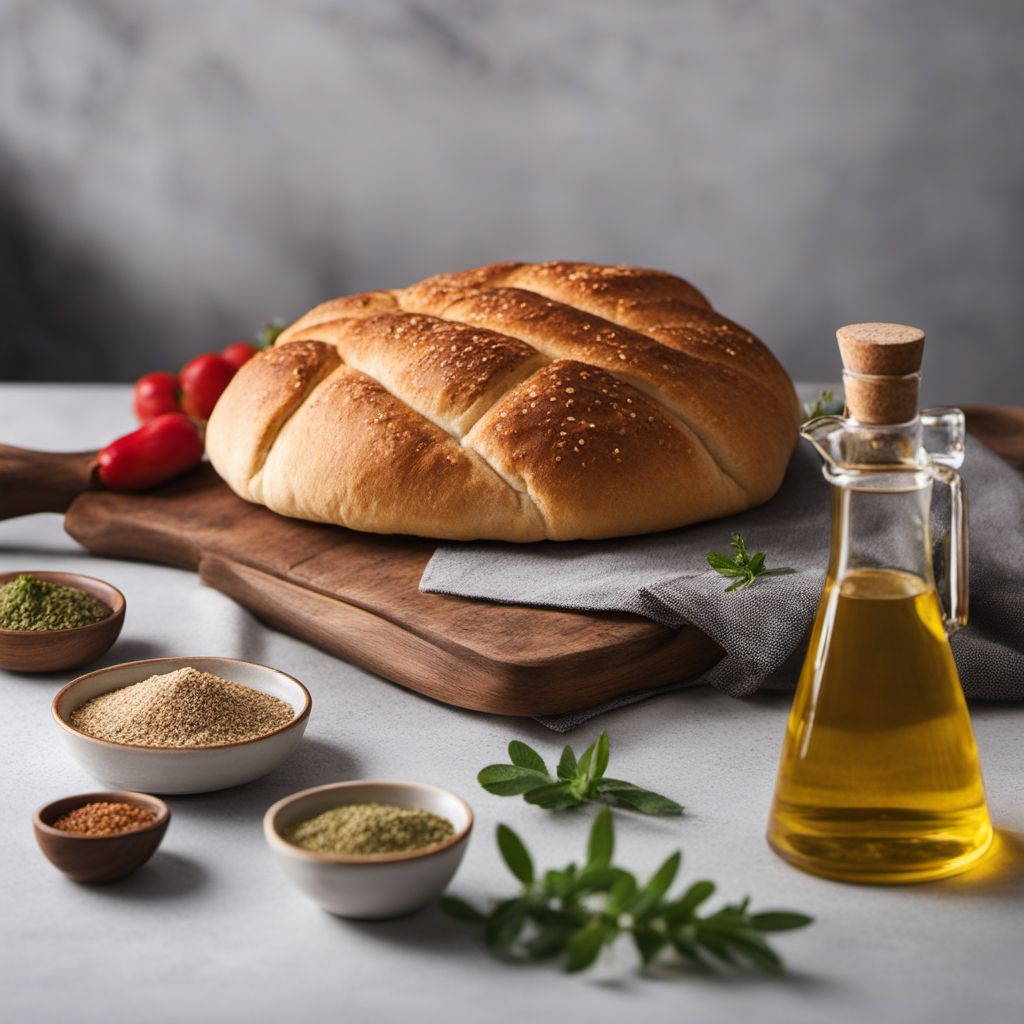
Recipe
Homemade Turkish Somun Bread
Fluffy and Flavorful: Mastering the Art of Turkish Somun Bread
4.7 out of 5
Indulge in the rich flavors of Turkish cuisine with this authentic recipe for homemade Somun bread. This traditional bread, originating from Turkey, is known for its soft and fluffy texture, making it the perfect accompaniment to any meal.
Metadata
Preparation time
15 minutes
Cooking time
15-20 minutes
Total time
Approximately 2 hours
Yields
4 servings
Preparation difficulty
Easy
Suitable for
Vegetarian, Vegan (if honey is substituted with sugar), Dairy-free, Nut-free, Egg-free
Allergens
Wheat
Not suitable for
Gluten-free, Keto, Paleo, Low-carb, High-protein
Ingredients
-
500g (4 cups) all-purpose flour 500g (4 cups) all-purpose flour
-
10g (2 tsp) instant yeast 10g (2 tsp) instant yeast
-
10g (2 tsp) sugar 10g (2 tsp) sugar
-
10g (2 tsp) salt 10g (2 tsp) salt
-
350ml (1 ½ cups) warm water 350ml (1 ½ cups) warm water
-
2 tbsp olive oil 2 tbsp olive oil
-
Sesame seeds, for topping Sesame seeds, for topping
Nutrition
- Calories (kcal / KJ): 250 kcal / 1046 KJ
- Fat (total, saturated): 4g, 0.5g
- Carbohydrates (total, sugars): 47g, 1g
- Protein: 7g
- Fiber: 2g
- Salt: 1.2g
Preparation
-
1.In a large mixing bowl, combine the flour, instant yeast, sugar, and salt.
-
2.Gradually add the warm water and olive oil to the dry ingredients. Mix until a soft dough forms.
-
3.Knead the dough on a lightly floured surface for about 10 minutes, until it becomes smooth and elastic.
-
4.Place the dough in a greased bowl, cover it with a clean kitchen towel, and let it rise in a warm place for about 1 hour, or until it doubles in size.
-
5.Preheat the oven to 220°C (425°F).
-
6.Punch down the risen dough and divide it into 4 equal portions. Shape each portion into a round ball.
-
7.Place the dough balls on a baking sheet lined with parchment paper. Cover them with a kitchen towel and let them rest for 15 minutes.
-
8.Gently flatten each dough ball into a round disc, about 1 inch thick.
-
9.Sprinkle sesame seeds on top of each disc.
-
10.Bake the bread in the preheated oven for 15-20 minutes, or until golden brown.
-
11.Remove the bread from the oven and let it cool on a wire rack before serving.
Treat your ingredients with care...
- Flour — Use all-purpose flour for the best results. Bread flour can also be used for a slightly chewier texture.
- Instant yeast — Make sure your yeast is fresh and active to ensure proper rising of the dough.
- Olive oil — Extra virgin olive oil adds a subtle flavor to the bread. If desired, you can substitute it with vegetable oil.
Tips & Tricks
- For a crispier crust, place a pan of water on the bottom rack of the oven while baking.
- Brush the bread with olive oil immediately after removing it from the oven for a glossy finish.
- Experiment with different toppings such as nigella seeds or dried herbs for added flavor.
Serving advice
Serve the freshly baked Somun bread warm, alongside your favorite Turkish dishes. It pairs exceptionally well with kebabs, stews, or as a base for sandwiches.
Presentation advice
To showcase the beautiful golden-brown crust, place the Somun bread on a wooden cutting board or a rustic bread basket. Tear the bread into rustic chunks for a more authentic presentation.
More recipes...
More Turkish cuisine dishes » Browse all

Acıbadem kurabiyesi
Almond Cookies
Acıbadem kurabiyesi is a traditional Turkish almond cookie that is crunchy on the outside and chewy on the inside. It is a popular dessert during...

Kandil simidi
Kandil simidi is a traditional Turkish bread that is perfect for breakfast or as a snack. It is a savory bread that is typically shaped into a...

Samsades
Samsades are a traditional Turkish pastry that is typically served as a snack or appetizer. They are made with phyllo dough and a savory filling.






